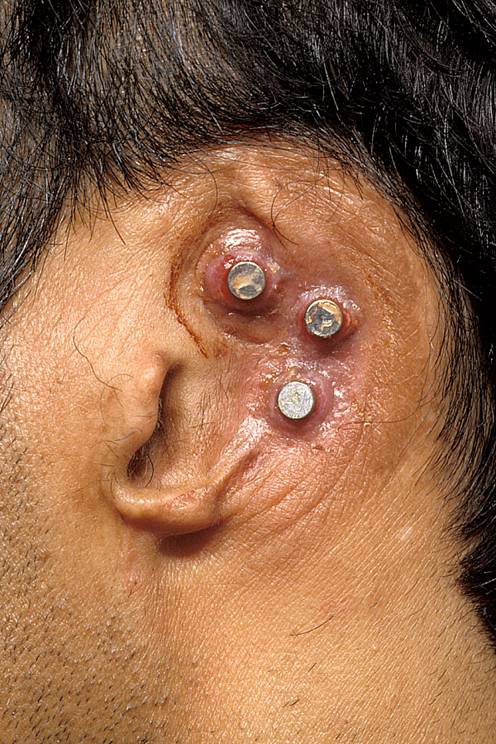Monday, October 29, 2007 - 11:30 AM
13523
The Branemark-type Bone-anchored Ear Prosthesis: The Untold Story
Background The absence of an ear due to congenital abnormality, trauma or cancer surgery poses an unusual and difficult reconstructive challenge. The Branemark-type osseointegrated ear prosthesis is regarded as an acceptable alternative when autologous reconstruction is technically impossible or declined by the individual. However, there is paucity of data in the literature with regards to patient satisfaction, complication rates and long term follow up relating to these ear retention devices.
Methods A twenty point postal questionnaire examining patient outcomes using likert rating scales was sent to all individuals who had undergone this procedure over a 16 year period in a national plastic surgery tertiary referral centre (n=44). A comprehensive case note review was also conducted.
Results A questionnaire response rate of 57% (25) was achieved. A high mean aesthetic satisfaction score (1.9) was obtained (1 ‘excellent' - 5 ‘terrible'). However, 84% (21) of the respondents had experienced skin problems around the abutments such as infection, bleeding and build up of granulation tissue whilst 64% (16) indicated they were still having ongoing skin complications with a high mean severity score of 3.6 (1 ‘mild' - 5 ‘severe'). Despite these chronic skin problems as many as 80% (20) of respondents indicated they would undergo the same procedure again or would recommend it to others. From the case note review, it was found that 36% (16) had developed over-granulation, all of which were successfully treated with the CO2 laser. Additionally, 28% (12) patients were found to have signs of clinical infection and 32% (14) patients found their abutments became loose regularly and fell out in 9% (4) of cases. Over a third (37%) of patients' were frustrated by the prosthesis detaching too easily from the Branemark implant!
Conclusion The Branemark device appears to offer patients a good aesthetic outcome but the frequency and severity of skin complications associated with the Branemark device was significantly and surprisingly high. We suggest this is largely due to an incomplete seal at implant-skin interface and propose a modification of the implant design that may reduce the prevalence of chronic skin complications. Additionally we have found the CO2 laser to be very effective in treating over-granulation around the abutments without significantly raising the temperature of the titanium implants. We advocate further investigation and more extensive patient follow up for Branemark ear prosthesis as this may have wider implications in other craniofacial bone-anchored prosthesis reconstruction.
View Synopsis (.doc format, 1406.0 kb)
See more of Cranio/Maxillofacial/Head & Neck
Back to 2007am Complete Scientific Program

